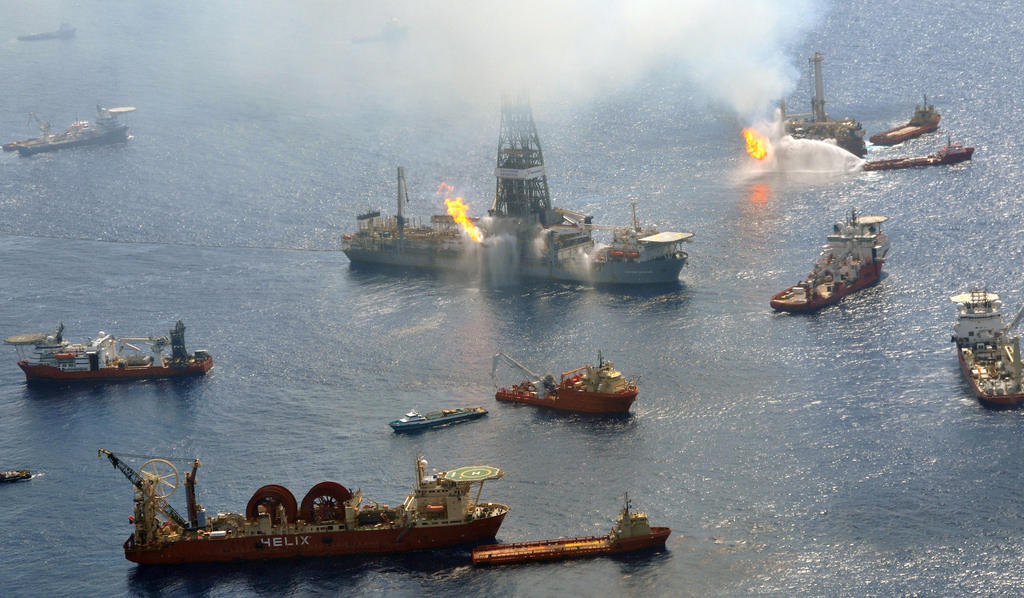Governments love buzzwords — probably because they roll off the tongue so nicely that people often overlook the fact they’re meaningless.
Take one of the B.C. government’s favourite expressions of late: “world leading” oil spill response.
It’s included not once, but twice, in B.C.’s five conditions for approval of oil pipelines — used to give the green light to the Kinder Morgan Trans Mountain pipeline.
But what does “world leading” oil spill response actually mean?
“I see a lot of gaps in this wording of ‘world class’ response,” says Riki Ott, a marine toxicologist who was working as a commercial fisher in Cordova, Alaska, when the Exxon Valdez ran aground on Bligh Reef in March 1989, spilling more than 41 million litres of oil into Prince William Sound.
Ott says little has changed in terms of oil spill response in the past 28 years. She witnessed that first hand during the BP Deepwater Horizon oil spill in 2010.
“I set foot down in Louisiana 21 years after the Exxon Valdez and I’m watching the news and I’m seeing it’s the same booms, it’s the same burning, it’s the same dispersants that were used 21 years ago,” Ott said. “I thought surely we had all learned lessons from the Exxon Valdez and that industry was going to be forced to improve its clean up methods based on lessons learned. Nope.”
The fact is there is no proven way to clean up a large oil spill in water.
FYI: ‘World Leading’ Oil Spill Response Means Nothing https://t.co/Tf8K7yCwau #bcpoli #cdnpoli #KinderMorgan #oilspills @reporteremma
— DeSmog Canada (@DeSmogCanada) January 24, 2017
Transport Canada expects only 10 to 15 per cent of a marine oil spill to be recovered from open water. That’s about as good as it gets.
But it gets a whole lot worse, especially when you’re dealing with diluted bitumen, or dilbit, from the oilsands — which nobody actually has a clue how to clean up, because it sinks.
“There is no known clean-up response for dilbit,” Ott told DeSmog Canada. “All of our so-called cleanup equipment deals with floating oil: the booms, the dispersants, the skimmers. You could have all the floating boom and skimmers available, but this stuff is going to sink so it’s not going to be effective.”
Diluted bitumen is comprised of the “worst parts of crude oil,” Ott says.
It has both the persistent, concentrated heavy hydrocarbons that end up on beaches or the ocean floor and don’t readily evaporate or dissolve. But it also has the volatile organic compounds, which are a hazard for spill responders, nearby public and wildlife.
Ott said Alaskans made a lot of assumptions going into the Exxon Valdez spill.
“You trust the government has these standards in place, that the government is ready, that you’re going to be taken care of if there is a spill,” she said.
“Instead what we found was that promises sound really good when the industry and the government want something and it all becomes kind of like smoke after the ink is dry on the permits.”
Nearly 28 years later, the herring fishery in Prince William Sound has never recovered. One pod of orcas has never reproduced since.
“Things just collapsed,” Ott said. “What comes back is not quite the same. It’s like Humpty Dumpty. It’s not put together quite the same way any more.”
About a third of the fishing community had to leave town because they couldn’t make ends meet. It took 10 years for the salmon to recover.
The stress led to spikes in domestic violence, substance abuse and suicide — all documented in Ott’s book Not One Drop: Betrayal and Courage in the Wake of the Exxon Valdez Spill.
“The state wasn’t there for us, the federal government wasn’t there, certainly Exxon wasn’t there. And it took 20 years before the litigation ended even for our most basic fishing claims,” Ott said. “This is what communities need to be ready for.”
Ott says there are plenty of red flags about B.C.’s ability to respond to an oil spill.
“You’ve already had a couple wake-up calls: you had the Marathassa oil spill right in English Bay … and it got away. And then you had Bella Bella much more recently … and it still got away.”
In the Bella Bella instance, a fuel barge tug ran aground, leaking an estimated 227,000 litres of diesel fuel. Oil spill response efforts were repeatedly hampered by poor water, failed spill containment and even an incident where a spill response ship took on water and itself began to sink. Meantime, the Heiltsuk’s shellfish harvesting areas were devastated.

“My hope as your neighbor across the border is that people really wake up and realize that the government has promised nothing.”
Photo: Spc. Casey Ware for 102d Public Affairs Detachment from the Deepwater Horizon oil spill in the Gulf of Mexico.
Subscribe to our newsletter
Stay up to date with DeSmog news and alerts







